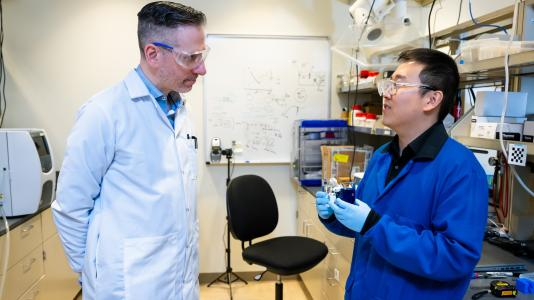Revolutionary Membrane Technology for Lithium Extraction from Water
Scientists at the U.S. Department of Energy’s Argonne National Laboratory have unveiled a groundbreaking membrane technology capable of efficiently separating lithium from water. This innovation promises to address surging global demand for lithium while reducing reliance on foreign suppliers and opening new reserves.

The Importance of Lithium
Lithium, the lightest metal on the periodic table, is a critical component in modern technology. It powers electric vehicles, smartphones, laptops, and even military equipment. As demand rises for cleaner energy solutions, concerns over lithium’s supply chain and environmental extraction impacts have intensified.
A New Approach to Extraction
Currently, most lithium is sourced from hard-rock mining and salt lakes in a few countries, making global supply chains vulnerable. However, the majority of Earth’s lithium exists dissolved in seawater and underground brines. Extracting lithium from these resources has historically been expensive and inefficient due to challenges in isolating lithium from similar elements like sodium and magnesium.
The Argonne team tackled this issue using a vermiculite-based membrane. Vermiculite, an abundant and inexpensive clay, was split into layers just one billionth of a meter thick and stacked like a multi-level parking garage. To stabilize these delicate layers, aluminum oxide pillars were inserted, preventing them from collapsing in water.
How It Works
The innovation lies in the membrane’s ability to filter ions based on size and charge. By engineering the membrane’s surface charge to be positive, it repels multivalent ions like magnesium (+2 charge) more strongly than monovalent lithium ions (+1 charge). Additional sodium ions reduce pore size, enabling lithium to be captured selectively while allowing smaller sodium and potassium ions to pass through.
“Filtering by both ion size and charge, our membrane can pull lithium out of water with much greater efficiency. This could reduce our dependence on foreign suppliers and open the door to new lithium reserves in places we never considered.”
— Yining Liu, Study First Author, University of Chicago
Wider Applications
Beyond lithium extraction, this membrane technology holds promise for recovering other valuable metals such as cobalt, nickel, and rare earth elements. It could even be used to filter out pollutants from drinking water, supporting both technological advancement and environmental sustainability.
This innovation aligns with global efforts to secure critical materials for renewable energy technologies and to protect water resources as demand grows worldwide.
Read the original article here: https://www.azom.com/news.aspx?newsID=64730
Sponsored by PWmat (Lonxun Quantum) – a leading developer of GPU-accelerated materials simulation software for cutting-edge quantum, energy, and semiconductor research. Learn more about our solutions at: https://www.pwmat.com/en
📘 Download our latest company brochure to explore our software features, capabilities, and success stories: PWmat PDF Brochure
📞 Phone: +86 400-618-6006
📧 Email: support@pwmat.com
#MaterialsScience #LithiumExtraction #EnergyInnovation #MembraneTechnology #QuantumServerNetworks #CleanEnergy #Nanomaterials #PWmat

Comments
Post a Comment